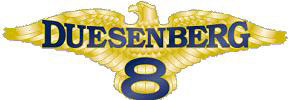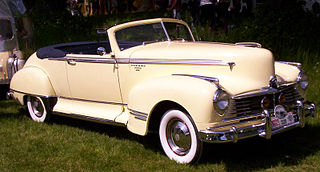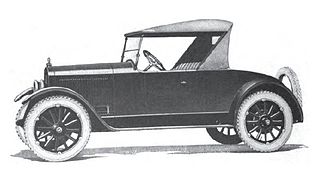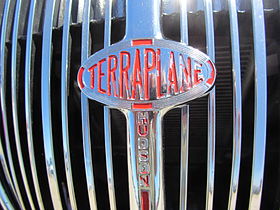
The term 1932 Ford may refer to three models of automobile produced by Ford Motors between 1932 and 1934: the Model B, the Model 18, and the Model 40. These succeeded the Model A. The Model B had an updated four cylinder and was available from 1932 to 1934. The V8 was available in the Model 18 in 1932, and in the Model 40 in 1933 & 1934. The 18 was the first Ford fitted with the flathead V-8. The company also replaced the Model AA truck with the Model BB, available with either the four- or eight-cylinder engine.

The Hudson Motor Car Company made Hudson and other branded automobiles in Detroit, Michigan, U.S., from 1909 until 1954. In 1954, Hudson merged with Nash-Kelvinator to form American Motors Corporation (AMC). The Hudson name was continued through the 1957 model year, after which it was discontinued.

The Essex was a brand of automobile produced by the Essex Motor Company between 1918 and 1922, and by Hudson Motor Car Company of Detroit, Michigan between 1922 and 1933.

Unic was a French manufacturer founded in 1905, and active as an automobile producer until July 1938. After this the company continued to produce commercial vehicles, retaining its independence for a further fourteen years before being purchased in 1952 by Henri Pigozzi, who was keen to develop Unic as a commercial vehicle arm of the then flourishing Simca business.

Duesenberg Automobile and Motors Company, Inc. was an American racing and luxury automobile manufacturer founded in Indianapolis, Indiana by brothers Frederick and August Duesenberg in 1920. The company is known for popularizing the straight-eight engine and four-wheel hydraulic brakes. A Duesenberg car was the first American car to win the 1921 French Grand Prix and Duesenbergs won the Indianapolis 500 in 1924, 1925, and 1927. Transportation executive Errett Lobban Cord acquired the Duesenberg corporation in 1926. The company was sold and dissolved in 1937.
Berliet was a French manufacturer of automobiles, buses, trucks and military vehicles among other vehicles based in Vénissieux, outside of Lyon, France. Founded in 1899, and apart from a five-year period from 1944 to 1949 when it was put into 'administration sequestre' it was in private ownership until 1967 when it then became part of Citroën, and subsequently acquired by Renault in 1974 and merged with Saviem into a new Renault Trucks company in 1978. The Berliet marque was phased out by 1980.

The Chrysler Imperial, introduced in 1926, was Chrysler's top-of-the-line vehicle for much of its history. Models were produced with the Chrysler name until 1954, after which it became a standalone brand; and again from 1990 to 1993. The company positioned the cars as a prestige marque to rival Cadillac, Continental, Lincoln, Duesenberg, Pierce Arrow, Cord, and Packard. According to Antique Automobile, "The adjective ‘imperial’ according to Webster's Dictionary means sovereign, supreme, superior or of unusual size or excellence. The word imperial thus justly befits Chrysler's highest priced model."
The De Vaux was an automobile produced by the De Vaux-Hall Motors Company of Grand Rapids, Michigan, and Oakland, California.

Albion Motors was a Scottish automobile and commercial vehicle manufacturer.

Hudson Hornet is a full-sized automobile that was manufactured by Hudson Motor Car Company of Detroit, Michigan from 1951 until 1954, when Nash-Kelvinator and Hudson merged to form American Motors Corporation (AMC). Hudson automobiles continued to be marketed under the Hudson brand name through the 1957 model year.

The Hudson Greater Eight is a luxury car that was produced by the Hudson Motor Car Company of Detroit, Michigan during 1931 and 1932.

The Hudson Commodore is an automobile that was produced by the Hudson Motor Car Company of Detroit, Michigan between 1941 and 1952. During its time in production, the Commodore was the largest and most luxurious Hudson model.

Railton was a marque of British automobiles made by Fairmile Engineering Company in Cobham, Surrey between 1933 and 1940. There was an attempt to revive it by a new company between 1989 and 1994 in Alcester, Warwickshire.

Rochet-Schneider was a French company, based in Lyons, that produced automobiles between 1894 and 1932. The Rochet-Schneider sales slogan was "strength, simplicity and silence".

Gardner was an automobile maker based in St. Louis, Missouri between 1920 and 1931.

The Cole Motor Car Company was an early automobile maker based in Indianapolis, Indiana. Cole automobiles were built from 1908 until 1925. They were quality-built luxury cars. The make is a pioneer of the V-8 engine.

The Hudson Super Six Coach is an automobile which was first manufactured by the Hudson Motor Car Company of Detroit, Michigan in 1916. The first model was kept in production until 1928. The nameplate was revived for a rebadged Essex for 1933, and then returned again from 1940 until 1951, aside from a wartime hiatus. The 1951s were actually called "Hudson Super Custom Six".

The Cunningham automobile was a pioneering American production automobile, one of the earliest vehicles in the advent of the automotive age. It was produced from 1896 to 1931 in Rochester, New York by James Cunningham, Son and Company.
The Marlborough was a make of car sold on the British market between 1906 and 1926. For most of its life the cars were made by Malicet et Blin in France, but after World War I they were partially assembled (finished) in London and an increasing number of British parts used.

The Packard Twelve was a range of V12-engined luxury automobiles built by the Packard Motor Car Company in Detroit, Michigan. The car was built from model year 1916 until 1923, then it returned 1933 until 1939. As a sign of changing times, the majority of second generation Packard Twelves received standard bodywork, with custom bodywork gradually losing favor. Many of the custom cars were actually only "semi-customs", with Dietrich assembling Packard-made bodies with special touches. The first generation engine was modified for military use and became the Packard 1A-2500 which began usage in 1924.






























